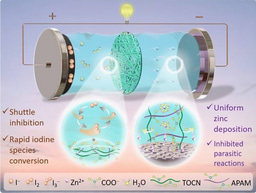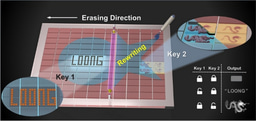Droplets Self-Draining on the Horizontal Slippery Surface for Real-Time Anti/De-Icing

As global economic losses from ice storms exceed US $10 billion per year, the limitations of traditional mechanical and chemical de-icing—high energy demand (>5 kW m-2) and environmental hazards—become more pronounced. Now, researchers from the School of Chemistry at Beihang University, led by Professor Liping Heng and Professor Lei Jiang, have presented a comprehensive study on a self-draining slippery surface (SDSS) that achieves real-time anti-icing on horizontal substrates under sunlight. This work offers valuable insights into next-generation icephobic technologies that overcome these limitations.
Why SDSS Matters
• Energy Efficiency: SDSS converts 100 mW cm-2 sunlight into 19.8 ± 2.2 °C surface heating and spontaneous electrostatic repulsion, eliminating external energy input.
• In-Surface Actuation: By integrating photothermal, pyroelectric and oleogel functions, SDSS enables droplet self-expulsion, drastically reducing re-freezing risk.
• Horizontal Anti-Icing: Mimicking natural self-cleaning, SDSS acts as an autonomous anti-icing skin ideal for aircraft, power lines and solar panels without tilt.
Innovative Design and Features
• Tri-Layer Stack: A 50 μm PDMS oleogel slippery film, 500 μm lithium-niobate pyroelectric layer and 600 μm CNTs/PDMS photothermal layer synergistically deliver low-power operation.
• Functional Materials: Transparent LN (88 % transmittance), high pyroelectric coefficient (~4 × 10-5 C m-2 K-1) and ultra-low sliding angle (<5°) enable sunlight-driven charge transfer and droplet removal.
• Universal Mechanism: Organic PVDF and inorganic PZT validate the thermo-electric coupling, proving broad material compatibility.
Applications and Future Outlook
• Multi-Scenario Protection: SDSS clears 10 μL droplets within 8 min at −20 °C and survives 100 freeze–thaw cycles, enabling maintenance-free protection.
• Tunable Surface Potential: Light intensity (0.5–2.0 kW m-2) modulates potential from 0 to 12 kV, offering programmable droplet routing.
• Autonomous Icephobic Neurons: SDSS responds to light, temperature and humidity, performing self-decision ice mitigation.
• Challenges and Opportunities: Long-term lubricant retention, mechanical durability and scalable fabrication remain; future work targets flexible substrates and roll-to-roll processing.
This comprehensive study provides a roadmap for low-power icephobic surfaces in real-world anti-/de-icing systems, highlighting interdisciplinary research in interfacial science, photothermal materials and electrostatic engineering. Stay tuned for more groundbreaking work from Professor Liping Heng and Professor Lei Jiang at Beihang University!
Follow the Topic
-
Nano-Micro Letters

Nano-Micro Letters is a peer-reviewed, international, interdisciplinary and open-access journal that focus on science, experiments, engineering, technologies and applications of nano- or microscale structure and system in physics, chemistry, biology, material science, and pharmacy.






Please sign in or register for FREE
If you are a registered user on Research Communities by Springer Nature, please sign in